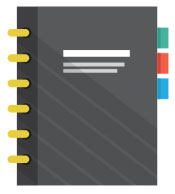Hey there, fellow creators! Ever feel that rush of excitement for a new video idea, then crash when you think about all the planning? From writing scripts to finding the perfect shots, video pre-production can feel like climbing a mountain. Trust me, I’ve been there. For years, the planning stage was my biggest headache. But what if I told you there’s a game-changer making this whole process so much easier? I’m talking about AI video planning, especially when you team it up with tools like ChatGPT for video creation.
This isn’t just about using a new piece of tech. It’s about completely rethinking how we make video content. In this guide, I’ll show you why AI in video production is not just a passing trend, but a real game-changer. We’ll explore why AI video planning matters, how it works, its incredible benefits, and even a few speed bumps you might hit. My goal is to give you all the info you need to use AI tools for video production smartly. You might even become a pro at using an AI video generator to craft awesome stories that captivate your audience. Let’s dive in!
What AI Video Planning Really Means
What is AI video planning?
AI video planning means using smart AI tools to help, improve, and automate different parts of video pre-production. This includes everything from brainstorming ideas and writing scripts to making storyboards, listing shots, and even creating first drafts of content. It helps make the early steps of video creation faster and more efficient. By using AI, creators can do less manual work and focus more on their main creative vision.
For a long time, I thought every single bit of video planning had to come directly from me. The idea of letting a machine help felt strange. But as deadlines got closer and I hit creative blocks, I started looking for new ways. That’s when I found the amazing power of AI video planning. It doesn’t replace human creativity. Instead, it makes it stronger. It lets us create more, make it better, and do it faster. Think of AI as your super-smart helper in the busy world of video content.
How AI is Changing Video Pre-Production for Good
In the past, film pre-production and video planning were really tough jobs. Imagine sketching hundreds of storyboards by hand, carefully breaking down a script, or spending hours just thinking up ideas. AI totally changes this. Instead of starting with nothing, AI in video production gives you a big head start.
With AI film pre-production, tools can look at your first ideas. Then, they can give you tons of new thoughts, descriptions for characters, and even rough script outlines. This means you spend less time staring at a blank screen and more time making your vision perfect. For example, an AI video generator can take a simple text idea and create visual concepts. This helps you quickly see scenes or even whole parts of your video before you even pick up a camera. This greatly reduces guesswork and lets you try out ideas fast. It saves both time and money. I remember a project where I was stuck on a tricky scene change. Instead of endless drawing, I gave my idea to an AI tool. In minutes, it showed me several strong visual options. One of them sparked the exact solution I needed.
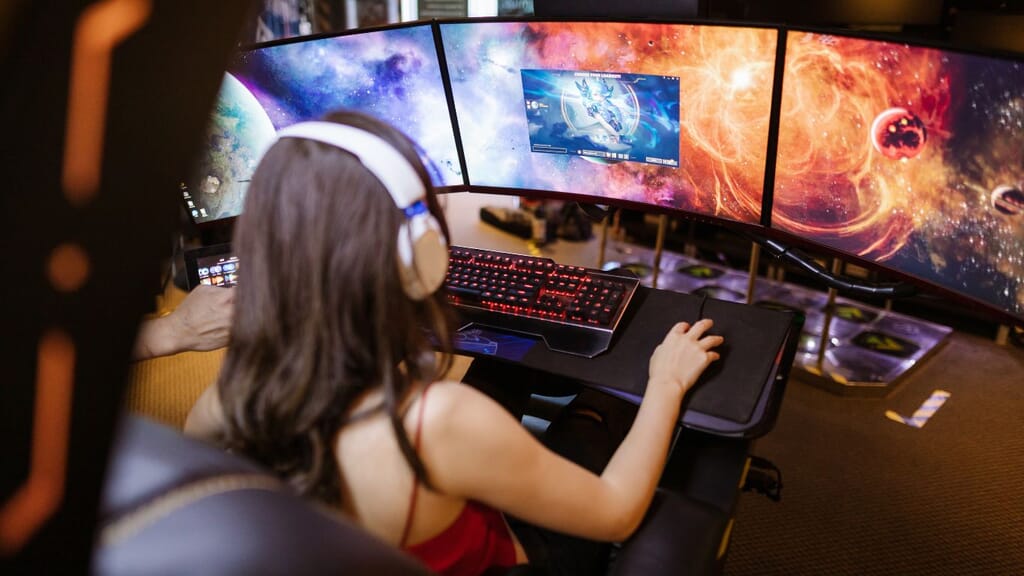
How AI Video Planning Comes to Life
How does AI video planning work?
AI video planning uses advanced computer programs, like those that understand language and learn from data. When you give it text, existing scripts, or even just general ideas, the AI looks at this information. Then, it creates useful content, suggests creative ideas, and handles repetitive tasks for you. This includes writing script drafts, suggesting camera angles, making simple storyboards, and even optimizing content for different platforms. The AI uses huge amounts of data to understand what you mean and give you clear, helpful results. It acts like a smart assistant for all your planning.
From my own daily work, the magic of AI video planning is how it takes raw ideas and quickly gives them structure. It’s like having a team of dedicated helpers working around the clock for you.
Your AI-Powered Workflow: From Spark to Screen
Let’s break down the typical steps in AI video planning:
- Brainstorming & Idea Generation: This is usually my first stop. When I’m stuck for ideas, I turn to ChatGPT for video creation. I’ll give it a broad topic, who my audience is, and how long I want the video to be. For instance, I might say, “Give me five YouTube video ideas about making quick, healthy meals for busy college students.” ChatGPT then churns out different concepts, outlines, and even possible titles. This gives me a solid starting point. It’s a huge boost for how fast I can create content.
- Script Development & Polishing: Once I have a concept, I ask AI to create a detailed script. I can tell it the tone I want, the style, what characters should say, and what action I want viewers to take. The AI can draft dialogue and suggest scene descriptions. I often find that the first draft from ChatGPT for video creation is a surprisingly strong start. This lets me focus on adding my unique voice and creative flair, instead of starting from scratch. This back-and-forth process lets me quickly test out different story ideas.
- Visual Storytelling & Storyboards: This is where AI tools for video production really shine. After the script is solid, I can feed it into an AI video generator. This tool can create visual ideas. While it might not give you a perfect, ready-to-shoot storyboard, it can generate images or even short video clips. These visuals show the mood, setting, and possible camera angles. This helps me see how the story will flow visually. It also helps me spot any missing pieces in my visual plan. Imagine seeing a rough animated version of your video before you even step on set – that’s the power we’re talking about!
- Resource Planning & Optimization: Beyond creative tasks, AI can also help with practical planning. Some advanced AI in video production platforms can look at your script. They can identify things like props, locations, and actors you might need. This helps you create more accurate lists of shots and even rough budget estimates. While this area is still growing, the potential to save effort here is huge.
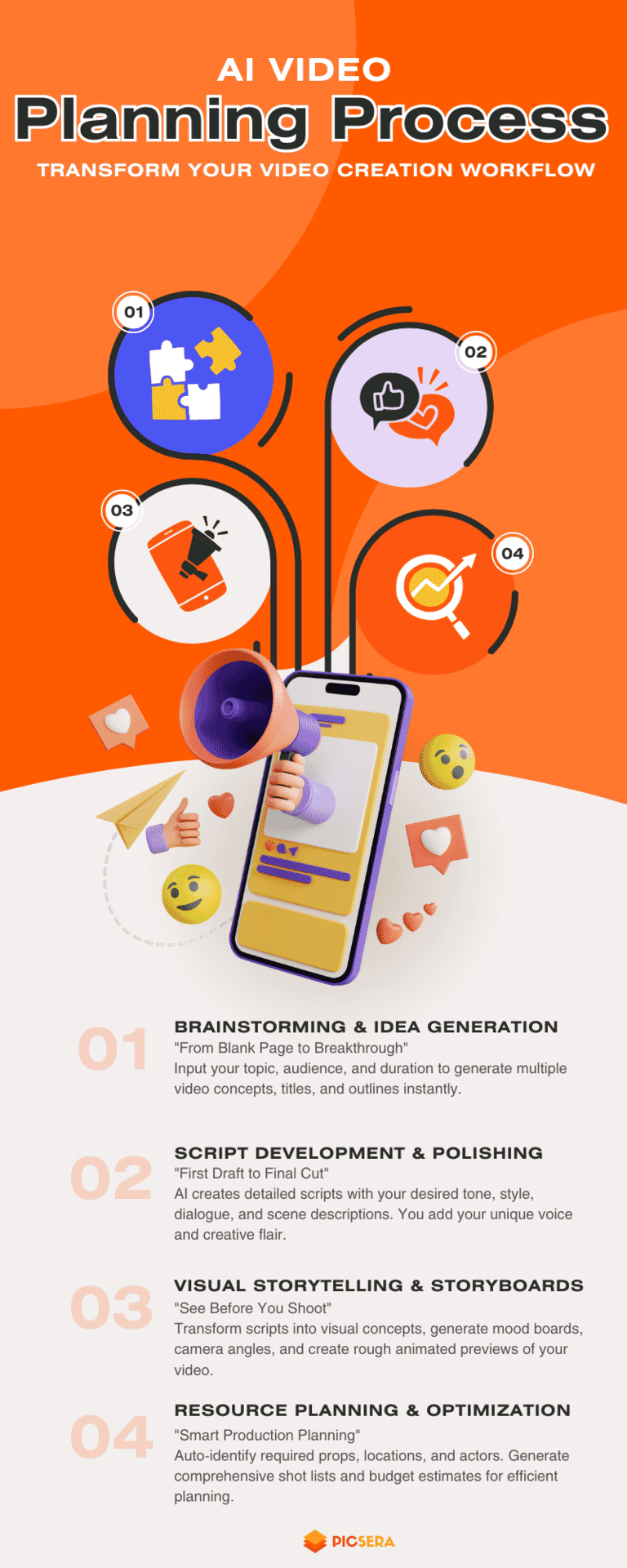
Why AI Video Planning is a Game-Changer: The Key Advantages
Using AI video planning isn’t just a fun experiment; it brings real benefits that make your work faster, more creative, and ultimately, more successful. From my own work, these are the big advantages I’ve seen firsthand:
What are the benefits of AI video planning?
Unlocking Efficiency and Speed: A New Era for Production
- Massive Time Savings: This is probably the most immediate and important benefit. Writing scripts, coming up with ideas, and making storyboards by hand take a lot of time. With AI video planning, these tasks happen much faster. I’ve personally cut my scriptwriting time by more than half. This lets me focus on the bigger picture of content development. Some studies suggest that AI-powered video tools can cut video production costs by up to 60% for brands, mainly because they make everything so much more efficient.
- Faster Project Delivery: For creators like me, who often handle many projects, finishing videos faster is key. AI in video production lets you quickly try out and improve ideas. This means you can go from a fresh concept to a ready-to-produce plan much quicker. This is vital for staying competitive in today’s fast-paced digital world.
Boosting Creativity and Innovation: Ideas Beyond Limits
- Breaking Creative Blocks: We all get stuck. Those moments when ideas just won’t flow. ChatGPT for video creation acts like a brilliant brainstorming partner. It offers fresh angles and unexpected ideas you might not have thought of. It pushes the boundaries of your imagination.
- Experimentation Made Easy: With the speed of AI-powered planning, you can afford to try more things. Want to test three different story paths for your video? AI can help you draft them all in a fraction of the time. This lets you choose the most compelling one. It makes your creative process more flexible and innovative.
- Smarter Content Choices: Some advanced AI tools for video production can look at trends and what audiences prefer. They suggest topics or styles that are likely to get attention. This makes sure your content isn’t just creative, but also smart about what your audience wants. For example, 82% of online video platforms use AI analytics to track engagement, suggest improvements, and optimize content in real-time.
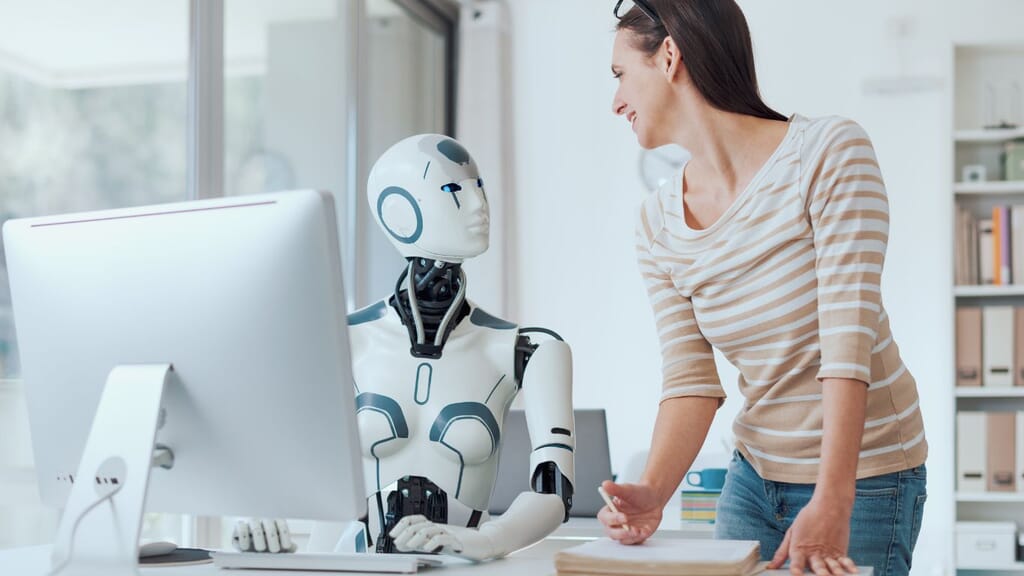
Saving Money and Growing Your Reach: Do More with Less
- Reduced Production Costs: By needing less manual effort in the planning stages, AI video planning can lead to big cost savings. This is really good for independent creators or small businesses with tight budgets. You might not need to hire extra scriptwriters or or storyboard artists for every project.
- Scalable Content Output: Imagine being able to make two or three times more high-quality video content without spending proportionally more money or time. That’s the promise of AI in video production. It lets you expand your content strategy, reaching a wider audience more consistently. This is especially true for things like repurposing content, where an AI video generator can turn a blog post into a video outline in moments.
Challenges with AI Video Planning
While the benefits are amazing, it’s important to use AI video planning knowing its limits. My own journey hasn’t been perfectly smooth, and understanding these challenges is key to using AI well.
What are the challenges of AI video planning?
The Human Touch: Finding the Right Balance
- Lacking True Nuance and Emotion: While ChatGPT for video creation can write good scripts, it might struggle with very deep feelings, subtle humor, or truly unique character voices. The results can sometimes feel a bit generic or “robotic.” My advice? Treat AI-generated content as a strong first draft – a canvas for your own creative touches.
- Keeping Your Unique Brand Voice: Every creator or brand has a special way of speaking. Just using AI-generated content without making changes can make your brand less authentic. It’s super important to add your own distinct personality and style to what the AI gives you. I always make sure to heavily edit and personalize anything AI generates so it truly sounds like me.
Ethical Questions and Quality Checks
- Bias in Training Data: AI programs learn from huge amounts of information. If this information has biases, the AI’s output can show those biases too. This is a very important point, especially when dealing with sensitive topics or different audiences. Always being careful and checking things is vital.
- Accuracy and Fact-Checking: While AI is powerful, it can sometimes “hallucinate” or create incorrect facts. Always double-check any data, numbers, or claims that AI tools provide, especially for videos that teach or share facts.
- Originality Concerns: The legal rules about who owns AI-generated content are still changing. Using AI as a tool is generally accepted. But just publishing raw AI output without significant human changes might lead to questions about how original it is. My rule is to always add a lot of human creativity to the AI’s foundation.
Technical Hurdles and Costs
- Computing Power Needed: Advanced AI video generators and AI tools for video production can need a lot of computer power. This means higher costs, especially for many or complex tasks. While free or cheaper versions exist, professional use often needs an investment.
- Learning How to Use Them: Even though many AI tools are made to be easy, there’s still a learning curve to writing good instructions (prompts) and knowing what each tool can and can’t do. It’s an ongoing process of trying things out and getting better.
Using AI for Incredible Video Success
Simple Tips for Creators Like You
Here are my best tips for easily adding AI video planning to your workflow:
- Start Small, Experiment Often: Don’t feel like you need to change your whole routine overnight. Begin by using ChatGPT for video creation for brainstorming ideas or making rough script outlines. As you get more comfortable, explore AI video generator tools for visual ideas.
- Learn to Write Great Instructions: How good the AI’s results are depends directly on how good your instructions (prompts) are. Learn to write clear, specific, and detailed prompts. Think of it like guiding an incredibly smart but very literal assistant.
- Focus on Your Unique Touch: While AI does the heavy lifting, your unique voice, storytelling ability, and real connection with your audience are still priceless. Use AI to free up your time so you can focus on these very human parts of your work.
- Stay Informed and Ready to Adapt: The world of AI in video production is moving incredibly fast. New AI tools for video production are coming out all the time. Keep an eye on what’s new in the industry, join creator communities, and be ready to change your plans as things evolve.
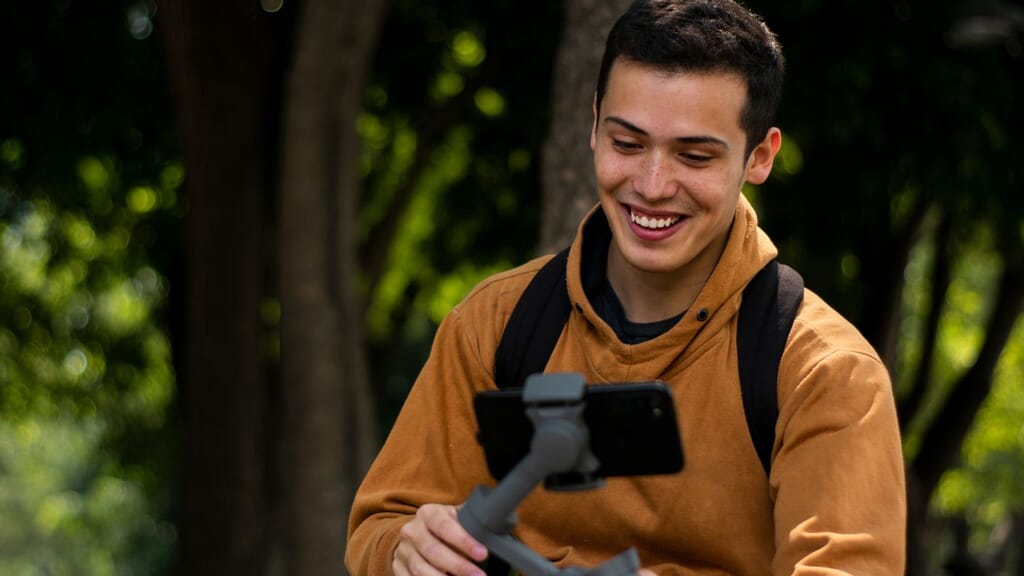
Looking Ahead: AI's Big Impact on Video
The numbers clearly show where AI is heading in video. For instance, 70% of marketing teams are expected to use AI-generated videos in their content strategies by 2029. This isn’t just about marketing; it shows a bigger change happening across all kinds of video content. The market for AI-generated video is set to grow a lot, reaching an estimated $14.8 billion by 2030. This growth is driven by the understanding that AI offers unmatched efficiency and creative possibilities.
Think about what this means for AI film pre-production. Imagine a future where AI can not only write scripts but also create whole scenes with digital actors. This would let filmmakers see their projects with amazing accuracy before even one camera rolls. This will make filmmaking more open to everyone, allowing more creators to make high-quality videos.
Conclusion
My own journey with AI video planning has been a constant adventure of discovery and huge growth. It completely changed how I saw what’s possible in video content creation. I went from feeling overwhelmed by planning to being excited by how fast I can test ideas and explore new creative paths.
The idea of turning a YouTube script into an optimized blog post and getting it to rank quickly might seem bold. However, by smartly using AI video planning concepts – like using ChatGPT for video creation, giving clear answers to common questions, and formatting your content to be easily readable – this goal isn’t just possible; it shows the real power of these tools.
Remember, the main idea isn’t for AI to replace your creativity. It’s to make it even stronger. It makes your work more efficient, your ideas more plentiful, and your impact more significant. By carefully following these tips, your AI video planning efforts will be in a fantastic position for higher visibility, more organic traffic, and a strong competitive edge. Embrace AI in video production as your trusted partner, and watch your content reach incredible new heights. The future of video creation isn’t just coming; it’s being planned by AI.

Picsera was founded in 2014 by David Sinai, a serious ameteur photographer who spent the first 20 years of his career working in the financial technology space. With a track record of building innovative solutions and working with offshore partners, David started Picsera to help photographers work more efficiently by enabling them to outsource their image editing. With very affordable rates and incredibly fast turnaround times, photographers from a variety of industries (eCommerce, real estate, weddings and portrait studios) enjoy larger, more successful businesses while still maintaining more time for their families, friends, and hobbies. Today, David and his team at Picsera assist all kinds of content creators with 3D modeling and rendering and video editing. When David is not working you’ll find him spending time with his family, mountain biking, or capturing landscapes throughout South Florida with either his pro cameras or drone.
